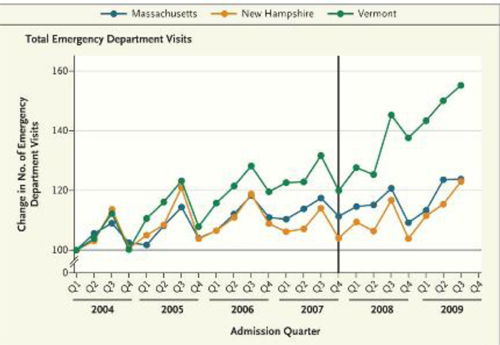Saturday Night Special?
This Phil Galewitz piece ran in the Washington Post back in August, but it’s still timely:
“Many hospitals are actively recruiting people to come to the ER for non-emergency reasons,” said Anthony Keck, South Carolina’s Medicaid director, citing facilities that tout their speedy ER service on highway billboards. “When you are advertising on billboards that your ER wait time is three minutes, you are not advertising to stroke and heart attack victims,” he said.
Dallas-based Tenet Healthcare Corp., a large hospital chain some of whose facilities have seen a surge of patients using the ER for primary care, recently began accepting online appointments to make it easier for patients to use the ER. It’s also promoting average waiting times on the Internet and on billboards…
Medicaid officials in Washington state were so concerned by hospitals’ ER marketing that they issued new rules making it harder for hospitals to qualify for Medicaid bonus payments if they promote their ER for primary care. “They sure don’t help us when we are trying to get word out that the ER is not the place you go for primary-care diseases like treating asthma or diabetes,” said Jeffrey Thompson, chief medical officer for the state Medicaid program.
HT to Trudy Liberman at The Health Care Blog.


